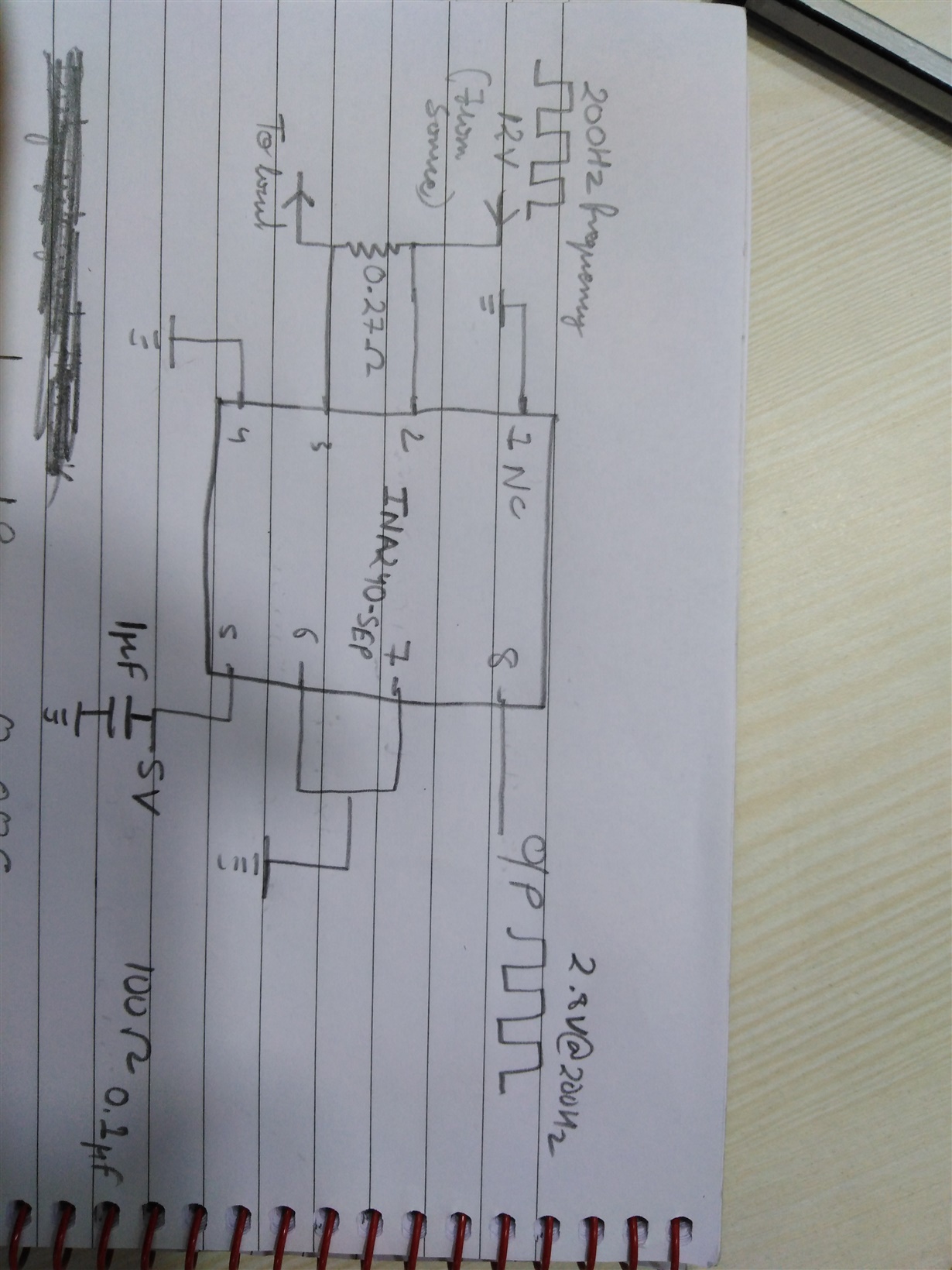Dear Team
I was designing a circuit with INA240-SEP.
However, I am facing a problem in the output pin of this IC. I am applying a modulated signal (12V to 0V) @ 200 Hz at the input pins and am using a 0.27 ohm shunt resistor. Now, in the output pin I am able to get a voltage signal that is directly proportional to the current consumed, however, this output is also modulated at the same duty cycle in which I have applied the signal. Moreover, I am getting spikes as well.
The datasheet of the IC mentions that it has good PWM rejection, but it isn’t doing so. Attached is my circuit diagram.
I seek your support, an early response from your side will be highly appreciable.
I thank you in anticipation and look forward to hearing from you.



